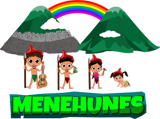Recent Posts
- The New RS-X Series by GoFoil: Transform Your Ride with Alex Aguera
- Unveiling GoFoil’s New P Series Front Foil Wings with Alex Aguera
- Catching Up with Alex Aguera and Checking Out the New GoFoil Masts and Tail Wings
- GoFoil Deep Dive with Alex Aguera on GT, RS, EZ, Wing Foil Boards and New Tails
- Dave Kalama discuses the E3 boards, foiling and downwind best practices
- The Carolina Cup Replaces Hawaii as the US Stop of the 2021 APP World Racing Tour
- Connor Wins Gold at the 2019 Pan American Games – Event Recap by Connor Baxter
- Blue Planet Balance Surfer
- The New York SUP Open returns from the 31st August – 7th September delivering something for everyone
- Sunset Beach Pro presented by Local Motion provides challenging opening rounds & stand out performances
Recent Comments
- SUP START on GoFoil Deep Dive with Alex Aguera on GT, RS, EZ, Wing Foil Boards and New Tails
- Rob on Blue Planet Balance Surfer
- Mike Chirlston on Connor Baxter Wins The Battle of the Bay – Event Recap by Connor Baxter
- Rob on Paddle Technique Part #5 – Recovery, Paddle Length & Grip
- Paddle Surf España on Paddle Surf Hawaii 10’6″ Stand Up Paddle Board by Blane Chambers – The Sweetest Stand Up Paddle Surfboard You Can’t Get
- Glowriya Walker on Paddle Technique Post #6: Turning the Board
- Inflatable Paddle Boards on THE WATERMAN LEAGUE GROUP SECURES SERIES A CAPITAL IN SUPPORT OF THE COMPANY’S WORLD CHAMPIONSHIP WATER EVENTS
- Glowriya Walker on Paddle Technique Part #5 – Recovery, Paddle Length & Grip
- Jassica Smith on OC2 Canoe Surfing with Kyndra and Kekoa
- Jassica Smith on OC2 Canoe Surfing with Kyndra and Kekoa
Categories
- Gear Previews (327)
- Boards (221)
- Paddles (50)
- Accessories (75)
- Gear Reviews (82)
- Boards (56)
- Paddles (15)
- Accessories (15)
- Tips (168)
- Q&A (9)
- News (1,107)
- Press Releases (599)
- Pro Updates (145)
- Sessions (144)
- Downwind/Racing (55)
- SUP Surf (67)
- Events (665)
- Polls (1)
- Uncategorized (158)
- Calendar (73)
- Gear Previews (327)
Archives
- February 2024
- December 2023
- December 2022
- January 2022
- November 2021
- August 2021
- August 2019
- July 2019
- February 2019
- January 2019
- December 2018
- October 2018
- September 2018
- July 2018
- May 2018
- November 2017
- October 2017
- July 2017
- June 2017
- May 2017
- April 2017
- February 2017
- January 2017
- November 2016
- October 2016
- September 2016
- August 2016
- July 2016
- June 2016
- May 2016
- April 2016
- March 2016
- February 2016
- January 2016
- December 2015
- November 2015
- October 2015
- September 2015
- August 2015
- July 2015
- June 2015
- May 2015
- April 2015
- March 2015
- February 2015
- January 2015
- December 2014
- November 2014
- October 2014
- September 2014
- August 2014
- July 2014
- June 2014
- May 2014
- April 2014
- March 2014
- February 2014
- January 2014
- December 2013
- November 2013
- October 2013
- September 2013
- August 2013
- July 2013
- June 2013
- May 2013
- April 2013
- March 2013
- February 2013
- January 2013
- December 2012
- November 2012
- October 2012
- September 2012
- August 2012
- July 2012
- June 2012
- May 2012
- April 2012
- March 2012
- February 2012
- January 2012
- December 2011
- November 2011
- October 2011
- September 2011
- August 2011
- July 2011
- June 2011
- May 2011
- April 2011
- March 2011
- February 2011
- January 2011
- December 2010
- November 2010
- October 2010
- September 2010
- August 2010
- July 2010
- June 2010
- May 2010
- April 2010
- March 2010
- February 2010
- January 2010
- December 2009
- November 2009
- October 2009
- September 2009
- August 2009
- July 2009
- June 2009
- May 2009
- April 2009
- March 2009
- February 2009
- January 2009
- December 2008
- November 2008
- October 2008
- September 2008
- August 2008
- July 2008
- June 2008
- May 2008
- April 2008
- March 2008
- February 2008
- January 2008
- December 2007
- November 2007
- October 2007
- September 2007
- August 2007
- January 2007
Find us on Facebook
Avatars by Sterling Adventures


